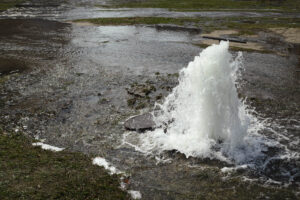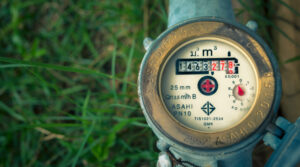The Department for Environment, Food & Rural Affairs has detailed guidance on how and why farmers need to prevent water pollution run-off.
Like all pollutants, agricultural pollution will disrupt the water ecosystem, with serious implications for us all. Adverse effects include contamination of the food chain, destruction of biodiversity, shortages of drinking water, and disease.
Water pollution has adverse effects on the health of the flora and fauna in the area and is also a threat to human health.
By doing what they can to prevent or manage wastewater pollution run-off, farmers are helping to protect their local water systems. For example, the careful use of fertilisers and preventing animal waste from reaching streams and rivers will help keep nitrogen and phosphorus out of the water system.
Silage
The potential problems caused by silage run-off have been recently highlighted by Farming UK. Silage is vital when it comes to keeping cattle and sheep well fed over the winter months. But agricultural insurance specialists have warned farmers they must be careful to check for leaks from stored silage. Effluent from silage is 200 times more toxic than untreated sewage and can cause devastating environmental damage if it gets into our waterways. Insurance companies will cover the clean-up costs but not any fines. So, farmers need to prevent water pollution run-off to protect both the environment and their own business.
What is silage?
In very simple terms, silage is preserved grass that farmers use to feed cattle and sheep through the winter months and times of drought when fresh grass is in short supply. Pasture grass is cut just before it becomes fully mature, when it contains the highest levels of nutrients. The grass is allowed to wilt, and is then chopped, compacted, and wrapped to reduce the oxygen levels – the microorganisms that ferment and preserve the silage thrive in oxygen-free environments.
There are two ways of achieving optimum conditions for making silage. One is to compact the grass into bales which are covered in plastic to preserve the moisture levels and create an oxygen-free environment. The other is to store the silage in a large pit, compact it using tractors, cover the pile in polythene sheeting and weigh it down – old tyres make very effective weights.
Under these anaerobic (oxygen-free) conditions, lactic acid bacteria begin to multiply, turning the plant sugars into lactic acid, causing the pH levels to drop. This process stops when the pH levels are at around 4-5, preserving the silage until it is exposed to the oxygen again just before use. Successfully fermented silage will be yellow-brown or green in colour and will smell fresh and fruity.
Reducing the risk of pollution
UK legislation about the storage of silage is very specific to minimise the risks of any run-off getting into waterways. The regulations state that field silage must be stored in a large pit (also known as a silage clamp) that is placed “at least 10 metres from any inland freshwaters or coastal waters, and at least 50 metres from the nearest relevant abstraction point of any protected water supply source that silage effluent could enter if it escaped”.
Silage compressed into wrapped bales also needs to be stored at least 10 metres from any inland freshwaters or coastal waters that effluent escaping from the bales could enter, and in addition, farmers “must not open or remove the wrapping of a bale within 10 metres of any inland freshwaters or coastal waters which silage effluent could enter as a result”.
At Castle Water, we are committed to helping our customers improve their water sustainability. With our specialist team on your side, you can better manage your water services to reduce costs, improve yields and bolster profitability, without being pulled from the core elements of your business. Download our free Water Efficiency Guide for practical steps you can take now, and keep checking our blogs where we regularly write stories highlighting sustainability and the environment.










